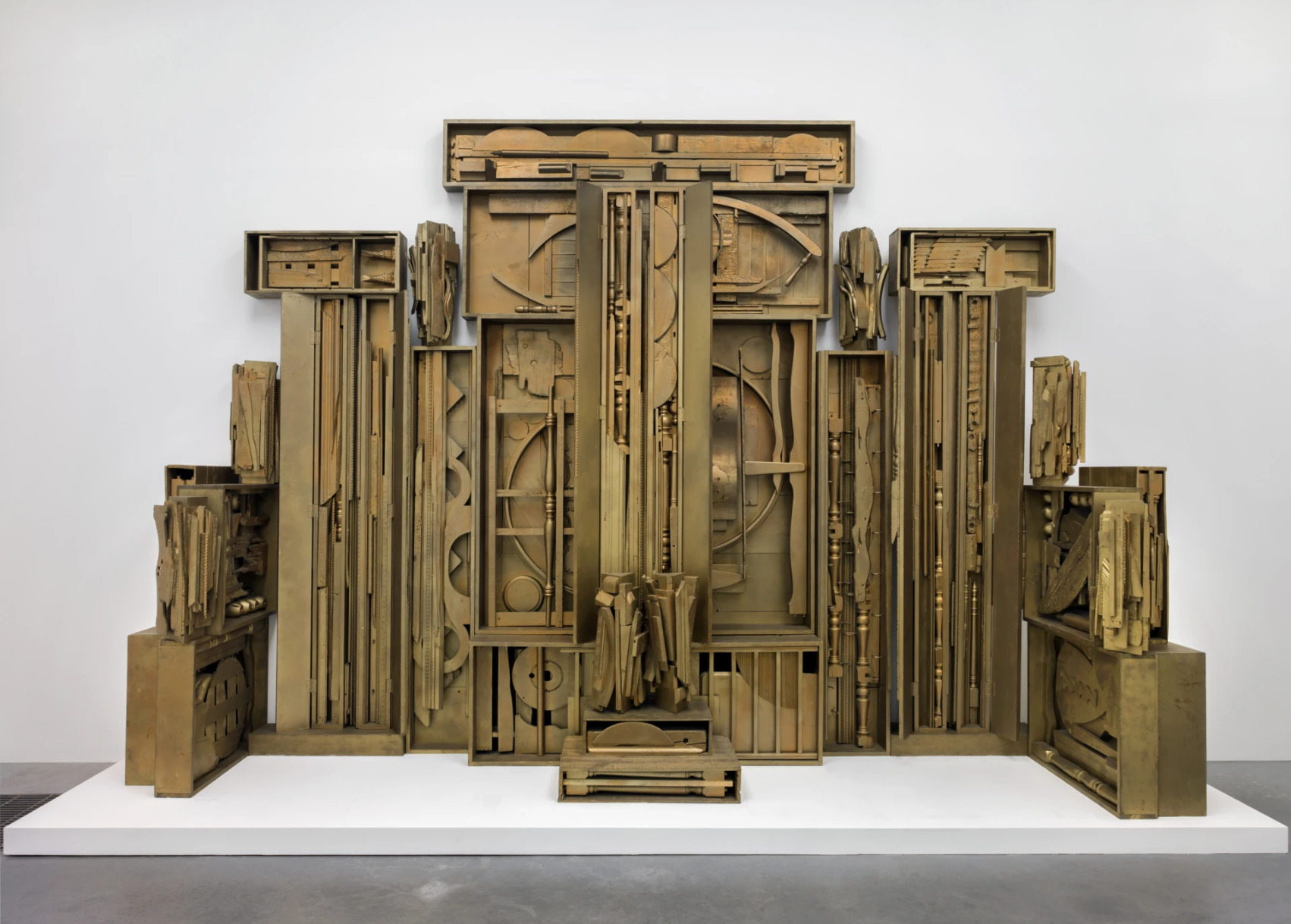An icon with an inimitable style, Louise Nevelson is today recognized as one of the major sculptors of the 20th century. Her art is generally evoked in the light of cubism, constructivism, Schwitters, her imaginary grandfather as Arp suggests in the poem he devotes to the artist in the magazine XXème siècle (1960), the ready-made or the collage practices of the Dada and Surrealist movements. But her sources of inspiration are much broader and her work invites us to evolve in a history of the arts where dance and performance – around which the exhibition is structured – play a leading role. Thirty years after her death, her legacy continues to resonate with the young contemporary scene, even in the world of fashion.
The study of eurythmy for twenty years with Ellen Kearns, who taught a bodily expression whose objective was to discover one's vital force and creative energy, as well as his fascination with Martha Graham in the 1930s, would revolutionize Nevelson's life and work. In 1950, his discovery of Mexico and Guatemala would give a monumental dimension to his work, now carried by a mixture of geometry and magic. Under this double influence, his environments emerged, progressively monumental, enveloping, totemic and sacred.
In 1958, while the term installation would not emerge until the 1960s, Nevelson staged her first large environment, at Grand Central Moderns in New York, which she called "Moon Garden + One", and in which she presented her first "wall", Sky Cathedral, a vertical homage to New York, her adopted city. The work is composed of reclaimed wooden objects that she gathers in boxes, before stacking them and painting them black, unifying the composition with a monochrome veil. Beyond the synthesis she creates between pre-Columbian art, cubism and the color field painting movement, Nevelson imagines a place to explore rather than a sculpture to be looked at head-on.
For each of his environments, which John Cage calls music theater, Nevelson takes a particular interest in space and light, bathing some of his works in blue, intensifying the shadows and the disorientation of the viewer in the darkness. Nevelson creates scenes in which the spectator's entire body is engaged. Theatricality is probably the keystone of all his major exhibitions, from Dawn's Wedding Feast, created in 1959 at the Museum of Modern Art as part of the exhibition "Sixteen Americans", to Mrs. N's Palace, a major work that finds its beginnings in Edward Albee's play, Tiny Alice, and from which the exhibition borrows its title.
Fifty years after her last exhibition in France, in 1974, at the Centre national d'art et de culture, the exhibition at the Centre Pompidou-Metz invites us to immerse ourselves in its multiple atmospheres, in the hope of fulfilling Nevelson's wish to present her sculptures as part of a total space, a narrative opening the doors to her imaginary world, an experience to be lived with all of the senses, and not as individual entities. The reconstruction of her environments is conducive to highlighting the fluidity between the multiple mediums she used, from her first terracotta figures and paintings to her engravings and plexiglass sculptures, to her installations, not to mention the collages – the true matrix of her art – that she composed from the 1950s to the end of her life.
Where does it take place?
Centre Pompidou-Metz
1 parvis des Droits de l'Homme
57000 Metz
France
Otherwise… check out the agenda

see all the things
to do around you
Hey, don’t go away...
Get the best
outings around you
All the best deals
events
spots













